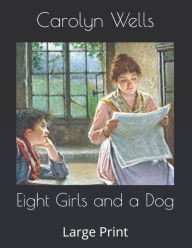Carolyn Wells
Carolyn Wells (June 18, 1862 – March 26, 1942) was an American writer and poet. Born in Rahway, New Jersey, she was the daughter of William E. and Anna Wells. She died at the Flower Fifth Avenue Hospital in New York City in 1942.
Wells had been
... Read more
Carolyn Wells (June 18, 1862 – March 26, 1942) was an American writer and poet. Born in Rahway, New Jersey, she was the daughter of William E. and Anna Wells. She died at the Flower Fifth Avenue Hospital in New York City in 1942.
Wells had been married to Hadwin Houghton, the heir of the Houghton-Mifflin publishing empire founded by Bernard Houghton. Wells also had an impressive collection of volumes of poetry by others. She bequeathed her collection of Walt Whitman poetry, said to be one of the most important of its kind for its completeness and rarity, to the Library of Congress.
After finishing school she worked as a librarian for the Rahway Library Association. Her first book, At the Sign of the Sphinx (1896), was a collection of charades. Her next publications were The Jingle Book and The Story of Betty (1899), followed by a book of verse entitled Idle Idyls (1900). After 1900, Wells wrote numerous novels and collections of poetry.
Carolyn Wells wrote a total of 170 books. During the first ten years of her career, she concentrated on poetry, humor, and children's books. According to her autobiography, The Rest of My Life (1937), she heard That Affair Next Door (1897), one of Anna Katharine Green's mystery novels, being read aloud and was immediately captivated by the unraveling of the puzzle. From that point onward she devoted herself to the mystery genre. Among the most famous of her mystery novels were the Fleming Stone Detective Stories which—according to Allen J. Hubin's Crime Fiction IV: A Comprehensive Bibliography, 1749–2000 (2003)—number 61 titles. Wells's The Clue (1909) is on the Haycraft-Queen Cornerstone list of essential mysteries. She was also the first to conduct a (brief, in this case) annual series devoted to the best short crime fiction of the previous year in the U.S., beginning with The Best American Mystery Stories of the Year (1931) (though others had begun a similar British series in 1929). In addition to books, Wells also wrote for newspapers.
Less































